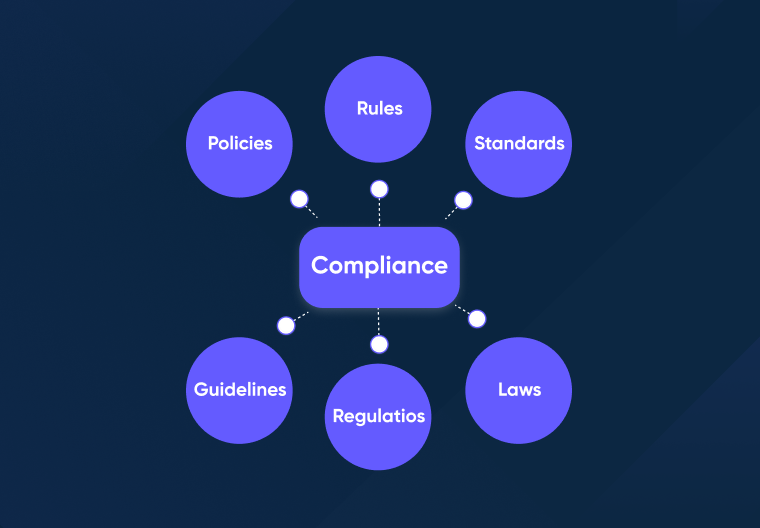
Breaking Information Silos Among Compliance Bodies is Important to Fight Financial Crimes
The annual estimate of money laundering is believed to fall within a range of 2% to 5% of the global Gross Domestic Product (GDP). However, it’s alarming to note that traditional barriers within organizations are proving to be more of a hindrance than a help. As financial institutions and businesses are struggling with cyber-attacks, whose progression results into money laundering, the call for breaking down these information silos has never been louder.
This blog will help your understand why understanding silos is important for a holistic approach to combating financial crimes in today’s world.
What are Information Silos?
As mandated by FATF, information silos are the barriers and limitations which hamper the flow of information with departments and organizations. These silos might be influenced by concern for privacy and confidentiality.
Criminals can highly exploit these barriers to conduct illicit financial activities without being caught. Thus, breaking down these information silos can enhance the detection of illicit networks and actors, disrupt criminal activity, and support cross-border deterrence of criminal behavior. For a clearer understanding, let’s examine a case study.
Case Study of Information Silos
Danske Bank Money Laundering Scandal:
Danske bank, in 2018 was found to be involved in one of the largest money laundering scandals revolving around $200 billion of suspicious transaction which passed through their Estonian branch.
Background Information: The suspicious funds from countries including Russia, Azerbaijan, and Moldova, flowed through Estonian branch. These funds were moved through network of companies with accounts at the bank, many of which had fictitious owners.
Information Silos: Top mistake in this case was the bank’s inability to integrate its Estonian branch’s operations and risk management systems within the bank. This created an information silo the main bank in Denmark had limited oversight and visibility into the activities of the Estonian branch, allowing suspicious transactions to go unnoticed for years.
Prominent Consequences: Once the scale of the suspicious transactions was revealed, it led to significant reputational damage for Danske Bank. The bank’s CEO, Thomas Borgen, resigned amidst the scandal, and the bank faced investigations from regulators in multiple countries.
It makes one wonder the reasons behind such a huge scandal. The answer lies in the challenges which limit the sharing of information in the industry.
Challenges of Breaking Informations Silos
Although the whole idea behind breaking information silos is to ensure that the financial crimes are alleviated as much as possible, such initiatives are implausible without addressing the challenges which come with them.
Data Protection and Privacy Concerns: One of the primary challenges is the need to balance the sharing of information with concerns about data protection and customer privacy. According to recent research by IBM and the Ponemon Institute, the estimated average global cost of data breaches is close to $4 million. Financial institutions are often restricted from sharing customer information indiscriminately with each other to protect this privacy.
Technological Backup: Effective information sharing demands significant modifications in technological resources. By making data sharing more accessible, affordable, and compatible for smaller institutions, challenges can be reduced.
Possibility of Displacement: In 2021, the FBI’s online crime reporting center got 847,376 reports about cyber threats and harmful online actions, leading to almost $7 billion in damages. Limiting data sharing to large organizations alone places a higher risk of directing risks toward smaller institutions.
Corporate Politics: Diverse range of departments and teams within an organization might have a greater interest in maintaining their independent operations and thus resist efforts to break down silos.
Standardization: Implementing standardized processes of information sharing across different entities is a hassle. However, by enabling varying systems, technologies, and protocols standardization is achievable.
Regulatory and Jurisdictional Challenges: Sharing information across different regulatory environments with distinct data-sharing protocols is risky because financial crimes often span multiple jurisdictions.
Solutions of Breaking Informations Silos
Every challenge has a possible solution. Thus, FATF has attempted to address all the challenges in the following ways:
Balancing Data Protection and Privacy: While concerns about customer privacy are valid, financial institutions (FIs) need to strike a balance in which information to share. Information that crosses risk thresholds can break down these silos without being limited to data protection.
Affordable Technological Solutions: To combat the gaps in technological resources, data-sharing initiatives must be made accessible and affordable, especially for smaller institutions. According to a survey by the Independent Community Bankers of America (ICBA), over 80% of community banks reported cost as a significant challenge when implementing new technology solutions.
Preventing Risk Displacement: To reduce the risk of criminals targeting smaller institutions, not part of data-sharing initiatives, platforms like Singapore’s COSMIC information-sharing initiative and Estonia’s AML Bridge have been developed to prevent financial crimes through small institutions.
Regular Communication with DPP Authorities: This collaboration is ideal for financial institutions as it helps assess new risks as they emerge and ensure that the approach to breaking silos aligns with DPP requirements.
Human Rights Impact Assessment: The very crucial, Amnesty International’s 2019 report highlighted that 89% of internet users worldwide are concerned about their privacy online, emphasizing the widespread concern about the human rights implications of digital activities. Thus, respecting individual rights must be mandated as a top priority.
Collaborative Approach: A collaborative approach where organizations work together can help effectively break down silos. This includes underpinning objectives, standards, and policies that enable the sharing of personal and personal information to investigate and report financial crime.
Bringing It All Together
Information silos within organizations hinder effective detection and prevention. The Danske Bank scandal exemplifies the consequences. While challenges like data privacy and resource constraints exist, solutions involve striking a balance, affordable technology, risk prevention, transparent communication, and a collaborative approach. Breaking these silos is not just beneficial but essential in our interconnected world to combat financial crimes effectively. AML Watcher has consistently remained at the forefront of educating about money laundering and the discussions that revolve around it. Furthermore, we have also remained ahead in providing country-wise information on regulations on our Country Guidelines.
For getting further information regarding challenges and conundrums which pertain to AML, or for discussing how your organization can address information silos and enhance its approach to combating financial crimes, please feel free to contact us.
We are here to consult you
Switch to AML Watcher today and reduce your current AML cost by 50% - no questions asked.
- Find right product and pricing for your business
- Get your current solution provider audit & minimise your changeover risk
- Gain expert insights with quick response time to your queries




